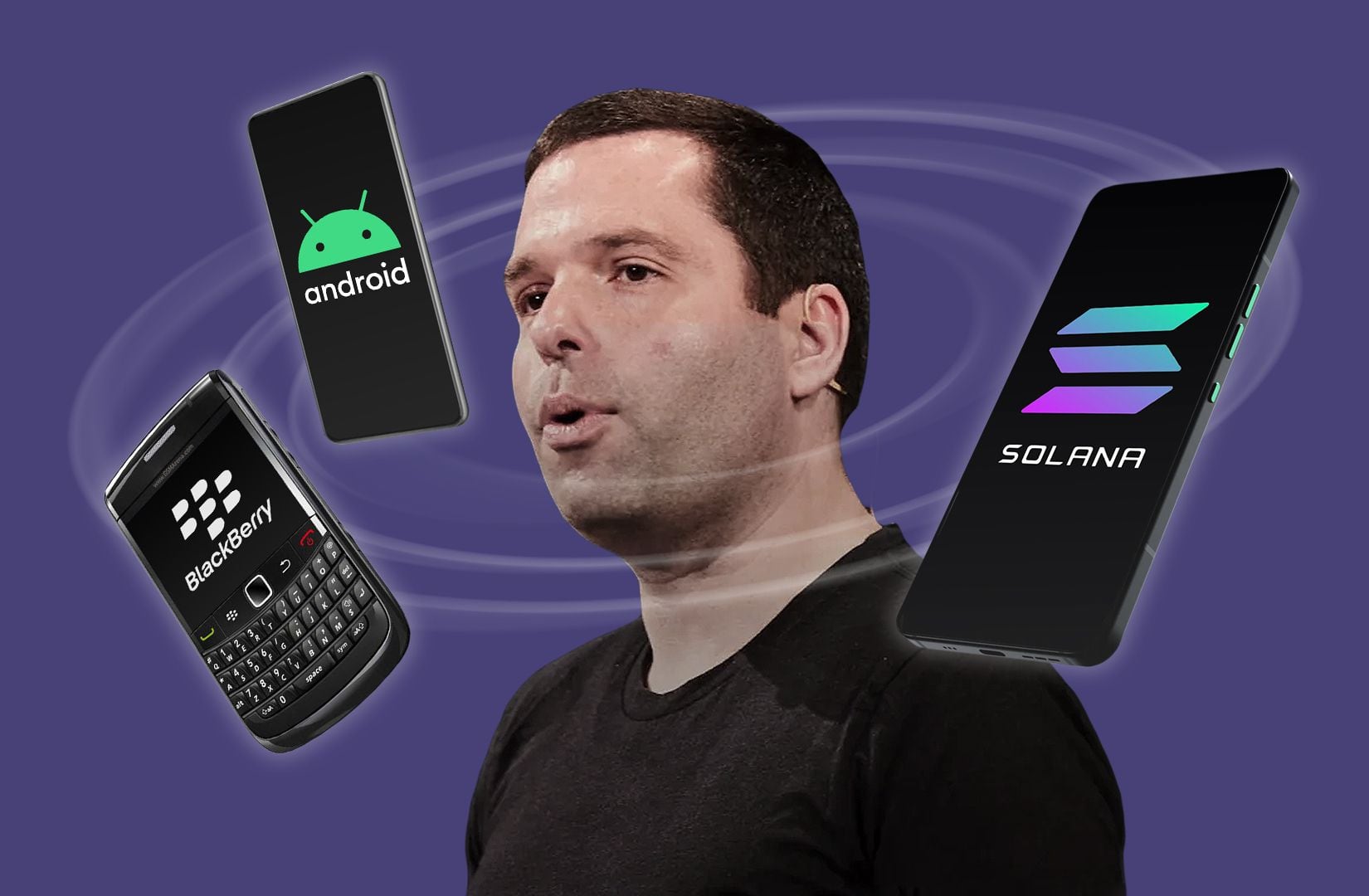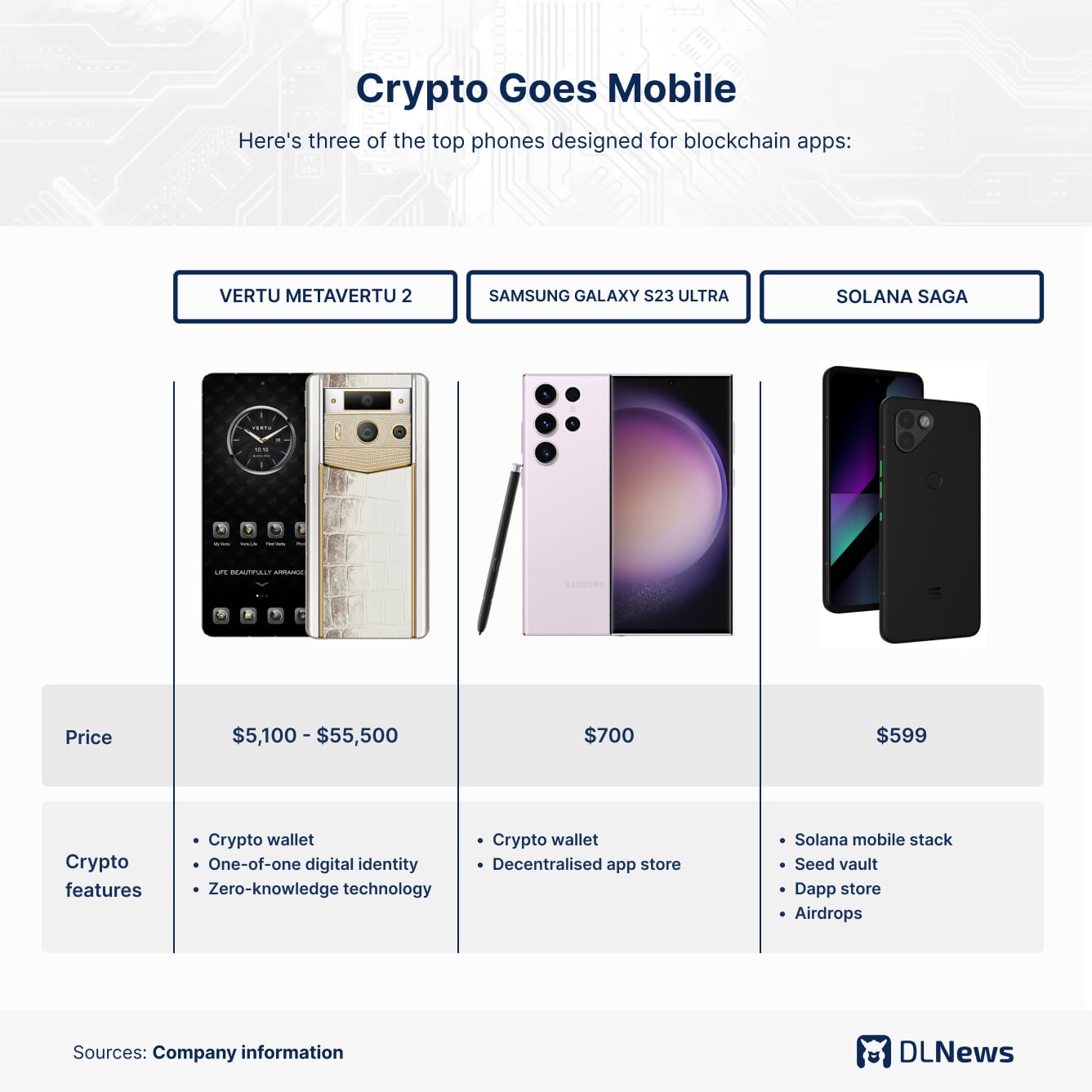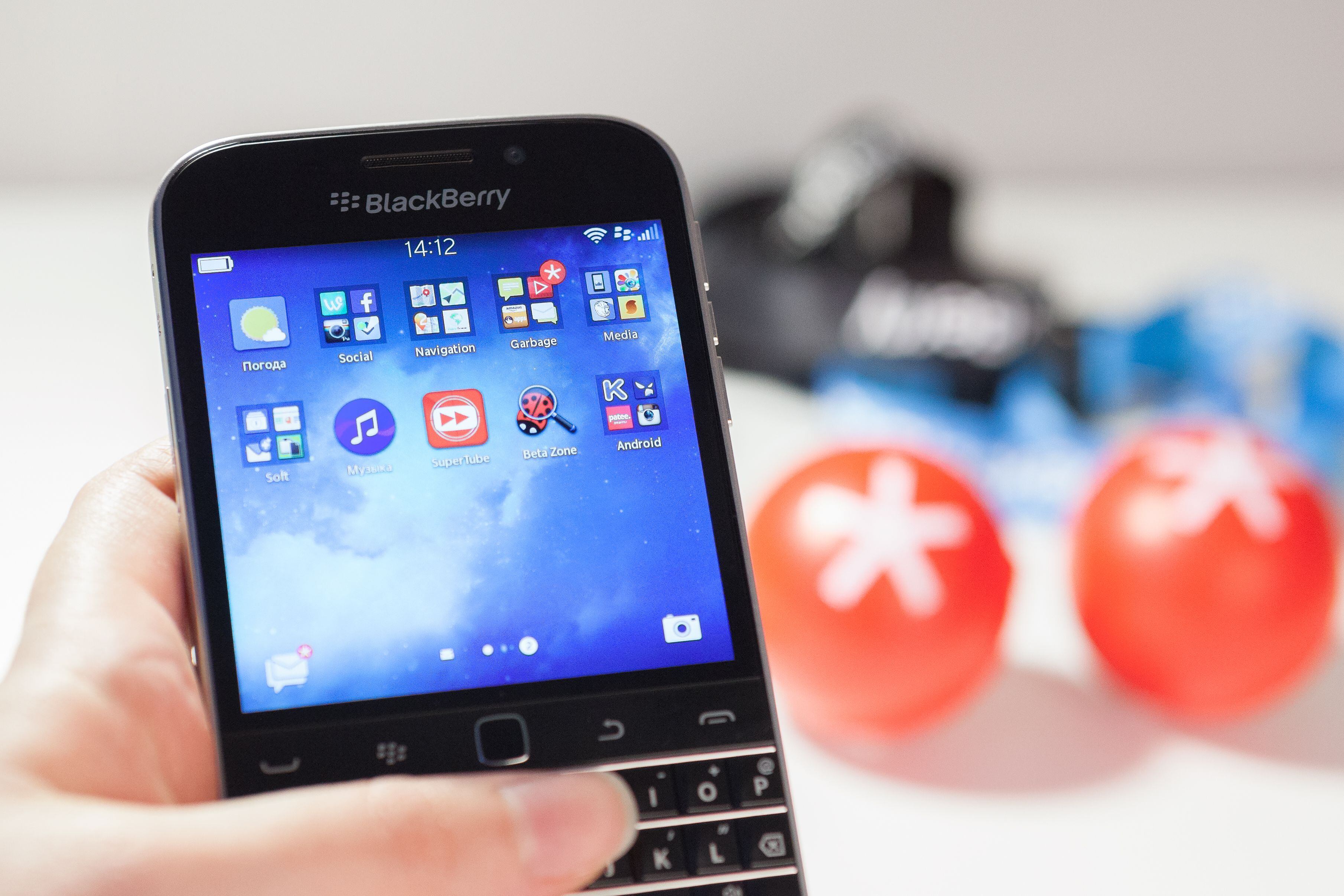Solana dev says new crypto phone ‘feels like madness’ — but it already has $65m in pre-orders
0
0

At first glance, Steven Laver doesn’t seem like the guy who would be leading the most audacious project in crypto.
The 43-year-old software engineer worked on the BlackBerry back in the 2000s, and then helped develop the Windows Phone app store at Microsoft.
He didn’t even work in crypto until early 2022.
Nevertheless, Laver is now the lead software engineer on Solana Labs’ push to change the crypto experience by putting blockchain capabilities in the palm of your hand.
“This has that big, sky’s the limit energy,” Laver told DL News in a rare interview. “This feels like madness, but at the same time, this feels like the end result.”
That result is Solana’s second mobile phone.
It’s called Chapter 2 and is slated to come out in early 2025. Preorders for the new device cost $500, and Solana says it has more than 130,000 preorders. That’s $65 million in preorders.
Bold bet
It’s a bold bet for the four-year-old blockchain network. Mobile telephony, one of the most regulated industries on the planet, is dominated by Apple and Samsung.
Why would Solana, a DeFi stalwart with a token worth $82 billion and one of the hottest brand names in crypto, make such a huge gamble on manufacturing hardware?
“It’s a tough, tough ask,” Chris Lewis, an independent telecoms analyst with over 40 years in the industry, told DL News.
The answer: control.
The Chapter 2 is Solana’s bid to liberate crypto from the desktop and the domination of the app platforms at Apple and Google.
The Silicon Valley powerhouses have long plagued crypto-friendly mobile developers by charging huge fees or banning apps from their platforms.
In a world where investing, shopping, banking and everything else happens on a smartphone, crypto is still fighting for a foothold.
“We’re used to everyone bringing a laptop to dinner, so you don’t miss a drop or a claim,” Emmett Hollyer, head of business development and product at Solana Labs, told DL News.
Memecoin madness
Solana, of course, isn’t the first crypto venture to try and pry open the incumbents’ grip.
Over the last decade, more than a dozen bespoke crypto phones have hit the market. But none have gained meaningful traction.
Last year, Solana gave it a shot with the Android-powered Solana Saga. Customers scooped up about 20,000 of the $600 handsets, which was well short of the 50,000 unit goal.
In comparison, Apple shipped more than 80 million iPhones in the fourth quarter alone.

But Saga hit on what has emerged as a not-so-secret weapon in crypto phone development — memecoins.
The device was delivered with a dog-themed memecoin called BONK. Somehow, collectors fell in love with BONK and its price soared 560% last December.
When investors scrambled for the phone on secondary markets, Hollyer and his team realised they’d stumbled on a new type of marketing play.
Now they’re producing a sequel.
‘Consumer hardware is hard, but phones are an order of magnitude beyond that.’
Steven Laver, Solana
While the company declined to disclose how much money it is investing in Chapter 2, it’s not a small number.
“Consumer hardware, in general, is hard, but phones are an order of magnitude beyond that,” Laver said. “Building a phone is an exercise as much in operations, logistics, and compliance as it is the underlying technology.”

The project comes as Solana rides a wave of momentum. Its native token, SOL, has soared 78% this year compared to a 64% jump in the price of Ethereum, according to CoinGecko.
With a market value of $81 billion, Solana is the fifth biggest digital asset.
Solana has also largely captured the red-hot memecoin market. Activity was so high in March that the network generated more fees than heavyweight Ethereum — no small task.
Lingering questions
Still, questions linger about the wisdom of launching a mobile phone.
“What is it you’re bringing in,” Lewis said. “Is it just the security? Is it a new interface? Is it the latest chip power? I think those are the questions you’ve got, and then to be able to build the brand and get it out into the market.”
And, perhaps most importantly, is there really demand for a crypto phone?
Deep roots
Solana’s project has deep roots in Silicon Valley’s mobile scene.
It sprang from a little-known but well-regarded project called Essential, which was founded by Andy Rubin, the brains behind Android at Google.
After Essential shut down in 2020, some staffers launched another mobile company called OSOM. A couple of years later, it developed the OV1 phone, which, sporting a ceramic, titanium body, became a cult fave.
If you look closely, it also looks a lot like the Solana Saga. That’s because they are almost the same. Solana Labs and OSOM announced a partnership in June 2022.

In February 2022, Laver landed at Solana right in the thick of the Saga development.
A Canadian native, Laver studied computer science at the University of Waterloo in Ontario (the same alma mater as Ethereum co-founder Vitalik Buterin).
Iconic products
Laver was present at the creation of several iconic products. He worked on a whole range of BlackBerries, made by the Canadian firm Research in Motion, which introduced handheld emailing and texting to corporate life.
At Microsoft, Laver worked on what would become the Windows Phone app store. He’s also dabbled in other consumer electronics products such as the smart watch manufacturer, Fitbit, plus stints at Apple and Google.
‘There’s a lot of low- and mid-budget Android phones that feel like a cheap car dashboard from the late ‘90s.’
Steven Laver, Solana Labs
From the get-go, Laver said the Saga was designed to have a satisfying heft in the hand and an elegant matte finish.
“There’s a lot of low- and mid-budget Android phones that feel like a cheap car dashboard from the late ‘90s,” said Laver.
Solana’s device was engineered with three features not found on normal handsets.
The first was called the Seed Vault.
This stores the seed phrases users employ to send and receive crypto. Saga’s security is somewhere in between an internet-connected crypto wallet such as Phantom or MetaMask and the vault-like Ledger, said Laver.
It’s not meant to hold millions of dollars of crypto, but you could buy a few cocktails with it.
Challenging Apple and Google
The Solana Mobile Stack lets mobile app developers build crypto apps for the phone. And the Solana dApp Store provides projects with a marketplace for their handiwork.
It’s designed to be an end run around the Apple App Store, which has taken down some of the larger crypto apps in the industry, perhaps most notably MetaMask in October. It was later reinstated.
In-app purchases on the Apple app store are also subject to a whopping 30% fee.
As for Google’s Play Store, it eased its crypto policy last summer. But it, too, typically charges developers fees between 15% and 30%.
Laver says the Solana Labs team is going to let crypto be crypto.
“We take a much lighter hand with our policy,” he said. “We’re trying our best to get out of the way.”
Profit centre
Solana Labs doesn’t charge any fees, except for the costs for posting the app’s metadata to the Solana blockchain.
“This isn’t a profit centre for us,” said Laver.
The platform already includes the NFT marketplace Magic Eden and the decentralised exchange Jupiter.
‘We need to find a way to give builders a reasonable path to distribution.’
Emmett Hollyer, Solana Labs
Hollyer hopes it puts pressure on Silicon Valley to take a more enlightened approach to crypto.
“Hopefully, Google and Apple will come to their senses and see what could be possible if they relax some of their fee structures and some of their restrictive policies,” he said. “Until then, we need to find a way to give builders a reasonable path to distribution.”
Solana recently recorded its 100th dapp.
“We’re just starting to get to this point where developers are starting to see the value of building for a phone like Saga,” Laver said.
BONK goes boom
But the big change in the Solana phone development was BONK, the $2.1 billion meme coin. Solana threw in $750 in BONK tokens with every phone.
When the token skyrocketed in December, 30 million BONK tokens were integrated directly into the Solana Saga phone. An arbitrage trade emerged.
“With the BONK, I bought other memecoins,” Lui Kohl, product manager at token vesting platform Streamflow, told DL News. “Overall, I think I turned $800 BONK into $4,000, so it was monetarily well worth it.”
Thanks to BONK buzz, Hollyer said Solana was able to sell the rest of its phones in three days.
The episode also spurred anticipation in Chapter 2, which will come loaded with five memecoins. Kohl, for one, has already pre-ordered the phone.
Absorbing the lessons of crypto mobile marketing, Laver conceded he was “personally a little confused.”
“Blockchain is just a little different,” he said. “At the end of the day, putting a real physical product, that is well integrated, in people’s hands, that’s why I do this.”
Liam Kelly is a Berlin-based DL News’ correspondent. Contact him at liam@dlnews.com.
0
0







